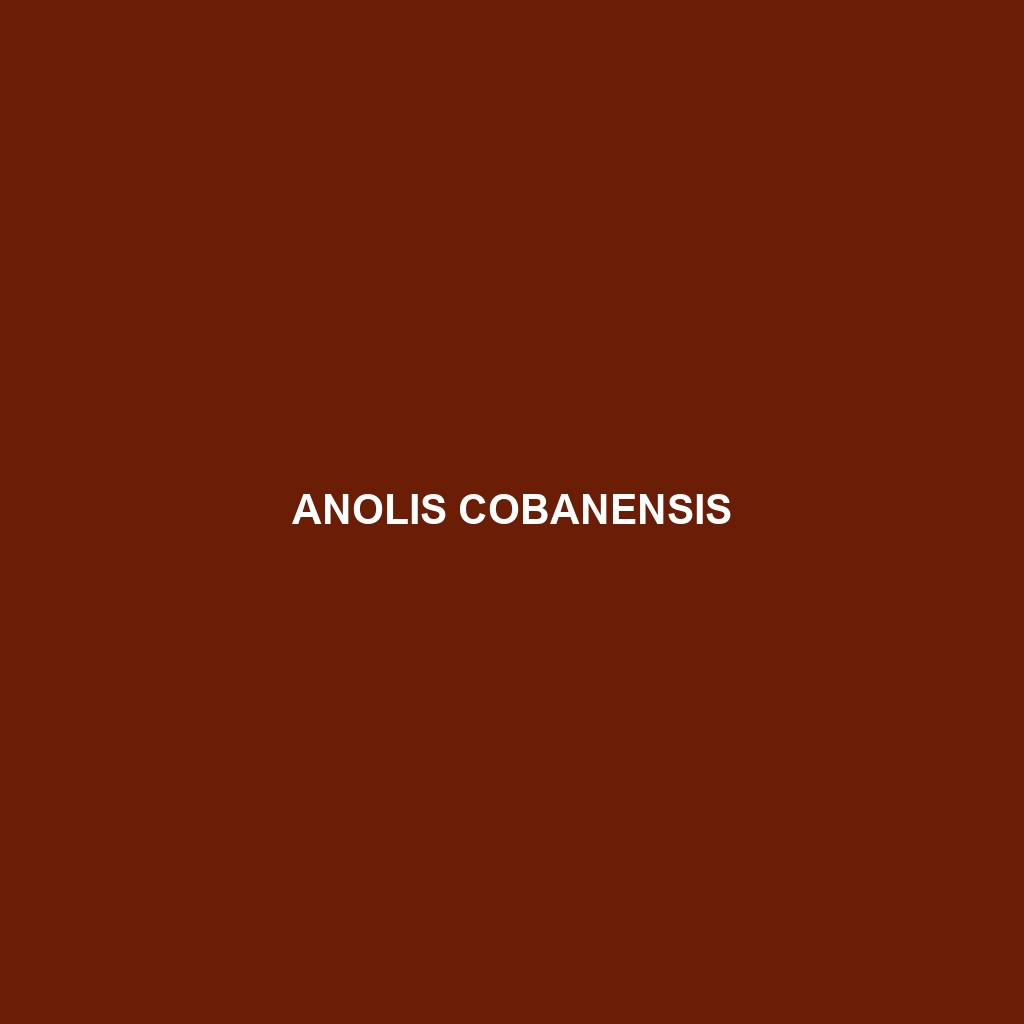Anolis cobanensis: Species Overview
Common Name: Anolis cobanensis
Scientific Name: Anolis cobanensis
Habitat
Anolis cobanensis, commonly known as the Cobán anole, is primarily found in the highland forests of Guatemala, specifically around the region of Cobán. This lizard thrives in humid environments, often inhabiting the dense understory and canopy of tropical montane forests. The species prefers areas with plentiful leaf litter and abundant vegetation, which offer both cover and hunting grounds.
Physical Characteristics
Anolis cobanensis is characterized by its small to medium size, typically measuring about 6 to 8 inches in total length. The distinctive coloration of this species generally features a vibrant green or brown hue, helping it blend seamlessly into its leafy surroundings. One of its most notable features is a pronounced dewlap, which is bright and usually pinkish or orange, used for communication and mating displays. The lizard’s long, slender body and slightly flattened tail facilitate agile movement within its arboreal habitat.
Behavior
The Cobán anole is primarily diurnal, exhibiting a range of behaviors throughout the day. These lizards are known for their territorial displays, where males use their vibrant dewlaps to attract females and ward off rival males. Social interactions are also notable during mating season, with elaborate courtship rituals involving push-ups and fencing movements.
Diet
Anolis cobanensis predominantly feeds on a diverse diet, primarily consisting of small invertebrates such as insects and spiders. They are active hunters, using their agility and climbing skills to capture prey among the forest foliage. This species also exhibits opportunistic feeding behavior, consuming small fruits and nectar when available, highlighting their adaptability in foraging.
Reproduction
This species reproduces once a year, with breeding typically occurring during the rainy season when conditions are optimal. Females lay small clutches of eggs, usually ranging from 2 to 4, which are deposited in moist leaf litter to provide a protective environment. The incubation period lasts several weeks, with hatchlings emerging fully formed and capable of independent survival.
Conservation Status
The current conservation status of Anolis cobanensis is classified as Vulnerable according to the IUCN Red List. Habitat loss due to deforestation and environmental changes poses significant threats to this species, making conservation efforts crucial to ensure its survival in the wild.
Interesting Facts
One fascinating aspect of Anolis cobanensis is its remarkable ability to change color based on environmental factors and emotional states, similar to other members of the anole family. Additionally, it has been observed exhibiting unique behaviors such as “push-up” displays, not only during mating but also as a way to establish dominance among males.
Role in Ecosystem
Anolis cobanensis plays a critical role in its ecosystem as both a predator and prey. By controlling insect populations, they contribute to the health of their habitat. Furthermore, their presence serves as an important food source for various larger animals, including birds and reptiles, thereby maintaining the balance within the biodiversity of Guatemalan montane forests.

